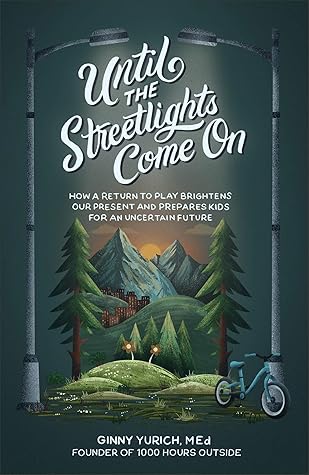More on this book
Community
Kindle Notes & Highlights
by
Ginny Yurich
Read between
February 17 - February 19, 2024
We don’t let our kids out of our sight, but we hand them the entire world of the internet at the average age of ten and four months.11 “Too much, too soon” as it pertained to information was not the typical experience in generations prior. Yet these same kids played for hours outdoors without supervision, and the tales they tell often leave us with gaping mouths.
To be prepared for a job market that spits out changes at increasingly faster rates, our children need to be innovative, adaptive, imaginative, opportunistic, and resilient. The path to those skills does not lie in a virtual realm where kids are passive participants in two-dimensional worlds that have been preprogrammed by adults and artificial intelligence. The qualities we want to impart to our children are cultivated through self-directed play and hands-on experiences.
When I find myself in an endless scroll for any length of time, I often walk away feeling like what I saw was, as Postman put it, “fragmented, discontinuous,
Childhood isn’t solely about preparation for the future. It’s about the present. It’s about the relationships we’re building day in and day out while we’re packing lunches and playing board games.
gazes, listen to their musings, and love them as they are. And herein lies the glorious thing: I believe that in doing so, in hearkening to the simple songs of our souls, we’re preparing them for the unknown.
the key is to step back to a slower pace, leaving margin for play and exploration so that we can go forward.
When our lives are filled with all the things that make us feel fully human, we begin to run out of time for screens and shake free from the grasp of the tech overlords.
Erin Loechner, a blogger, a speaker, and the founder of the international homeschooling co-op Other Goose, wrote an insightful book called Chasing Slow.
“Childhood is not a race to see how quickly a child can read, write, and count. It is a small window of time to learn and develop at the pace that is right for each individual child. Earlier is not better.”5 Earlier is not better.
“Reading, writing, and arithmetic only take about one hundred hours to transmit as long as the audience is eager and willing to learn. The trick is to wait until someone asks and then move fast while the mood is on. Millions of people teach themselves these things—it really isn’t very hard.”18 We use the “they’ll do it when they’re ready” approach so often with babies and toddlers: They’ll roll over when they’re ready. They’ll crawl when they’re ready. They’ll take their first steps when they’re ready. Is it possible to extend this approach into the early childhood years—and even beyond?
...more


